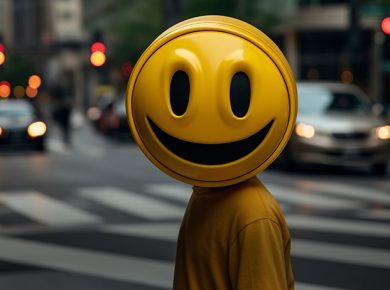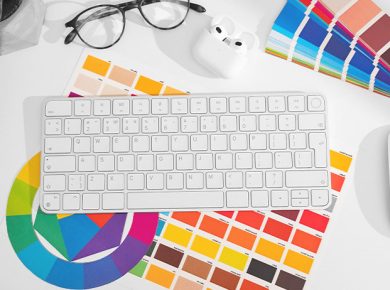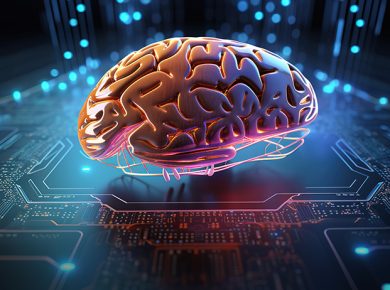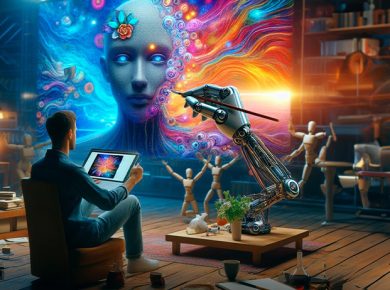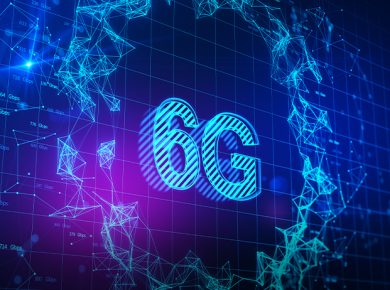Table of Contents
Graphic design is an ever-evolving field, constantly adapting to new trends and technologies. As we look to the future, it’s exciting to imagine where this dynamic industry is headed. From innovative tools to fresh design approaches, here’s a glimpse into the future of graphic design.
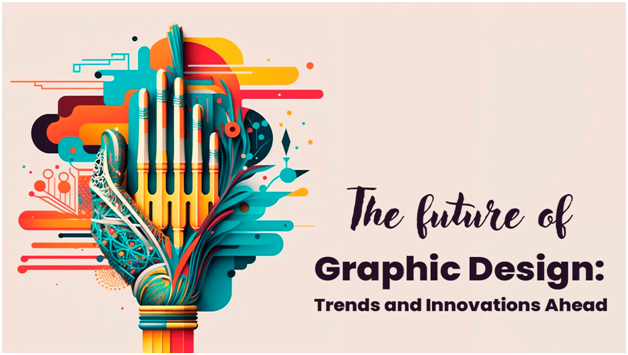
Embracing Augmented Reality (AR)
One of the most exciting trends in graphic design is the integration of augmented reality (AR). AR overlays digital elements onto the real world, creating interactive and immersive experiences. Imagine pointing your smartphone at a product and seeing it come to life with animations, detailed information, or even virtual try-ons. This technology is revolutionizing how brands engage with their audiences, making the user experience more interactive and engaging.
The Rise of Artificial Intelligence (AI)
Artificial intelligence is making waves in graphic design, offering tools that can automate routine tasks and provide creative assistance. AI-powered design tools can help with everything from selecting color schemes to generating layouts based on user input. This doesn’t mean designers are being replaced by machines; rather, AI is enhancing creativity by handling the repetitive aspects of design, freeing up designers to focus on more complex and imaginative tasks.
Sustainable and Ethical Design
As awareness of environmental and social issues grows, so does the importance of sustainable and ethical design. Future graphic design will increasingly focus on eco-friendly practices, such as using recyclable materials, reducing waste, and promoting digital over print when possible. Additionally, there will be a stronger emphasis on inclusive design, ensuring that products and interfaces are accessible to all users, regardless of their abilities.
Interactive and Motion Design
Static designs are becoming a thing of the past as interactive and motion design take center stage. These elements make websites, apps, and digital content more engaging and user-friendly. For instance, micro-interactions—small animations that guide users through an interface—can enhance usability and provide a more enjoyable experience. Motion graphics, on the other hand, add a dynamic layer to storytelling, making content more captivating and memorable.
Personalized Design Experiences
Personalization is key to connecting with today’s audiences. Future graphic design will leverage data to create tailored experiences that resonate with individual users. This could mean anything from personalized website layouts to customized marketing materials. By tapping into user data and preferences, designers can create more relevant and impactful designs that foster deeper connections with their audience.
The Growth of Remote Collaboration
The shift towards remote work has transformed how design teams collaborate. With the rise of cloud-based tools, designers can now work together seamlessly from anywhere in the world. This trend is likely to continue, making it easier for diverse teams to collaborate on projects, share ideas, and streamline workflows. These tools not only facilitate communication but also ensure that projects stay on track, regardless of physical location.
Minimalism and Simplicity
Minimalist design isn’t going away anytime soon. In fact, it’s set to become even more prominent as users crave simplicity and clarity in an information-overloaded world. Minimalist design focuses on essential elements, removing unnecessary clutter and creating a clean, straightforward user experience. This trend is all about making designs that are not only aesthetically pleasing but also highly functional.
Conclusion
The future of graphic design is bright and full of potential. Emerging trends and technologies are set to transform how designers work and how users experience their creations. From augmented reality and artificial intelligence to sustainable practices and personalized experiences, the possibilities are endless. As the field continues to evolve, one thing is certain: graphic design will remain a crucial tool for communication, creativity, and connection in our ever-changing world.
So, whether you’re a seasoned designer or just starting out, keep an eye on these trends and technologies. Embrace the changes, experiment with new tools, and continue to push the boundaries of what’s possible in graphic design. The future is yours to create!
